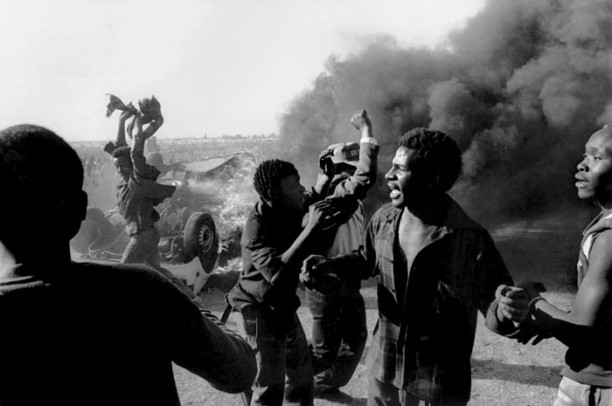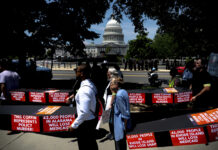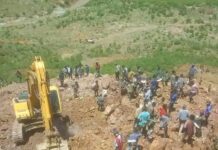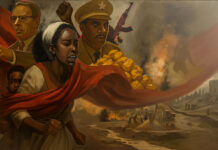
On the morning of June, 8, 1988 dozens of children from Washington, D.C. schools spread out across the well-manicured lawns of the United States Capitol. Holding hands, the students walked one by one into the majestic domed Capitol building, which sits in the center of the capital city. The children marveled at the large rotunda within the building and giggled as their voices echoed off the spacious walls beneath the dome.
Trips to the capital are a time-honored tradition in the United States. Each year, school children from around the country make the trip to Washington, D.C. to visit the United State Congress, where 535 senators and representatives make the laws of the nation. There they get to see democracy in action.
But this trip was no ordinary field trip and these children weren’t there just for a civic lesson. They were also there to deliver a message. Each child carried a small black doll to deliver to the lawmakers.
Each doll represented a child who would be harmed by the sanctions Congress had imposed on South Africa. Organizers of the event also said the dolls represented children harmed by the tactics of the African National Congress and its all-out war against the apartheid government.
The message was simple: sanctions would do more harm than good.
The event that day was organized by a group calling itself the Wake Up America Coalition. It was headed by the Reverend Kenneth A Frazier, a failed congressional candidate and president of a small, largely unknown private foundation. Frazier, a black American, called the doll giveaway and lobbying campaign “Operation Heartbreak”.
Two years earlier, sanctions had been imposed on South Africa by the American government after a grassroots campaign organized by the Free South Africa Movement, a black-American-led coalition of anti-apartheid groups, labor unions and religious organizations.
“We are here in the interest of millions of suffering South African children who are already the poorest and most helpless and the most vulnerable in South Africa [who will] be further harassed and suffer all the more with a further round of U.S. sanctions,” Frazier said at the time.
Frazier’s plea, and his lobbying campaign, were largely ignored. Within weeks, the House of Representatives in the U.S. Congress would pass a tougher sanctions Act. The day-long campaign would represent the highpoint for “Operation Heartbreak” and its parent organization, the Wake Up America Coalition, both of which would vanish as quickly as they had sprung up.
Years later the event would be revealed as part of an elaborate campaign aimed at turning the American black community against further sanctions on South Africa rather than a homegrown lobbying campaign to highlight human suffering.
It was one of many in a nearly 50-year lobbying and propaganda campaign by the apartheid-era South African government and its allies – corporations with business operations in South Africa, conservative religious organizations and an unlikely coalition of liberal black clergy and anti-communist black conservatives aligned with right-wing Cold War politicians in the US, who opposed sanctions against South Africa.
With plans hatched by government officials in Pretoria and aided by an army of lobbyists in Washington, apartheid defenders waged a relentless campaign for the hearts and minds of the black community, which was at the forefront of the U.S. campaign pushing for sanctions.
The lobbying campaign would involve hundreds of people, from church leaders to black newspaper owners to black businessmen to executives at multinational corporations. Some were willing participants who were paid handsomely for their services. Others, like the black children delivering dolls to members of Congress, unknowingly aided the campaign.
The aim of the lobbying effort was to keep sanctions from being imposed on the white minority government and isolate prominent critics of apartheid like Nelson Mandela, Oliver Tambo, Bishop Desmond Tutu and the African National Congress from blacks in America. Instead, its supporters tried to establish links between black American leaders and black South Africans with closer ties to the apartheid government such Zulu Chief Mangosuthu Buthelezi, Bishop Barnabas Lekganyane of the Zion Christian Church and Bishop Isaak Mokoena of the Reformed Independent Church.
Most surprisingly, the apartheid government’s campaign to build a coalition to stall or eliminate sanctions would involve many prominent civil rights leaders, some of whom had fought, along with Martin Luther King Jr, against racism and segregation in the United States.
The anti-campaign would extend far beyond Washington, as Pretoria’s agents also spent millions of dollars to try to build up a network of support for proxies of the apartheid government such as the National Union for the Total Independence of Angola (Unita), among black groups in Texas, Arizona, Florida, North Carolina, Ohio and Mississippi.
Ultimately, the campaign did little to stop the support for sanctions among American blacks.
Civil rights leaders would march and many would be arrested protesting against the apartheid government’s policies. Black college students around the country would persuade colleges to divest from companies that did business with South Africa. Even black business leaders, who initially called for engagement instead of divestment, would eventually call for sanctions.
“The campaign ultimately failed, but it wasn’t from a lack of effort. These groups were everywhere, trying to counter what we were doing,” said Mwiza Munthali, public outreach director for TransAfrica, an advocacy organization in Washington, DC, that seeks to influence the foreign policy of the United States towards African and Caribbean countries. “They were relentless.”
The campaign was part of the apartheid-era government’s worldwide propaganda campaign to improve its image in the United States and other countries. Official estimates put annual spending on the campaign at about $100-million a year, though the true amount might never be known. The lobbying effort targeting American blacks was not the largest, but it was one of the most significant.
Black Americans played a leading role in the anti-apartheid movement, persuading the United States government to pass sanctions against Pretoria, even over the objections of a reluctant then-President Ronald Reagan, who was forced to implement the 1986 Comprehensive Anti-Apartheid law after Congress rejected his pleas to engage in dialogue rather than what he called “punitive measures.”
The sanctions bill, the most stunning foreign policy defeat of the Reagan presidency, signaled a new era of black American influence on U.S. foreign policy. Alarmed by the success of this movement, particularly in the mid-1980s, the South African government would pour substantial resources into countering it.
The above is an excerpt from “Operation Blackwash: Apartheid South Africa’s 46-Year Propaganda War on Black America,” a new e-book by Ron Nixon available at Mampoer Shorts and on Amazon.







[…] a standard propaganda tactic deployed by Pretoria in attempts to prevent its own isolation. In Operation Blackwash: Apartheid South Africa’s 46-year Propaganda War on Black America, Ron Nixon details […]
[…] a standard propaganda tactic deployed by Pretoria in attempts to prevent its own isolation. In Operation Blackwash: Apartheid South Africa’s 46-year Propaganda War on Black America, Ron Nixon details […]
[…] 100Reporters […]